Sealife guideThe orangeband surgeonfishAcanthurus olivaceus
Last updated on 09/05/2024 at 09:40 PM
Taxonomy
- Common name: Orangeband surgeonfish
- French name: Poisson chirurgien olive à bande orange, chirurgien à épaulettes, chirurgien gendarme (Polynésie)
- Scientific name: Acanthurus olivaceus (Bloch & Schneider, 1801)
- Family name: Acanthuridae
- Order name: Acanthuriformes
- Class name: Actinopterygii
Description
The orangeband surgeonfish, as its name suggests, has a dominant greenish-brown color with a distinctive large, horizontally elongated oval orange patch that starts behind its eye and ends in a blue-violet comet-shaped tail in the middle of its body.
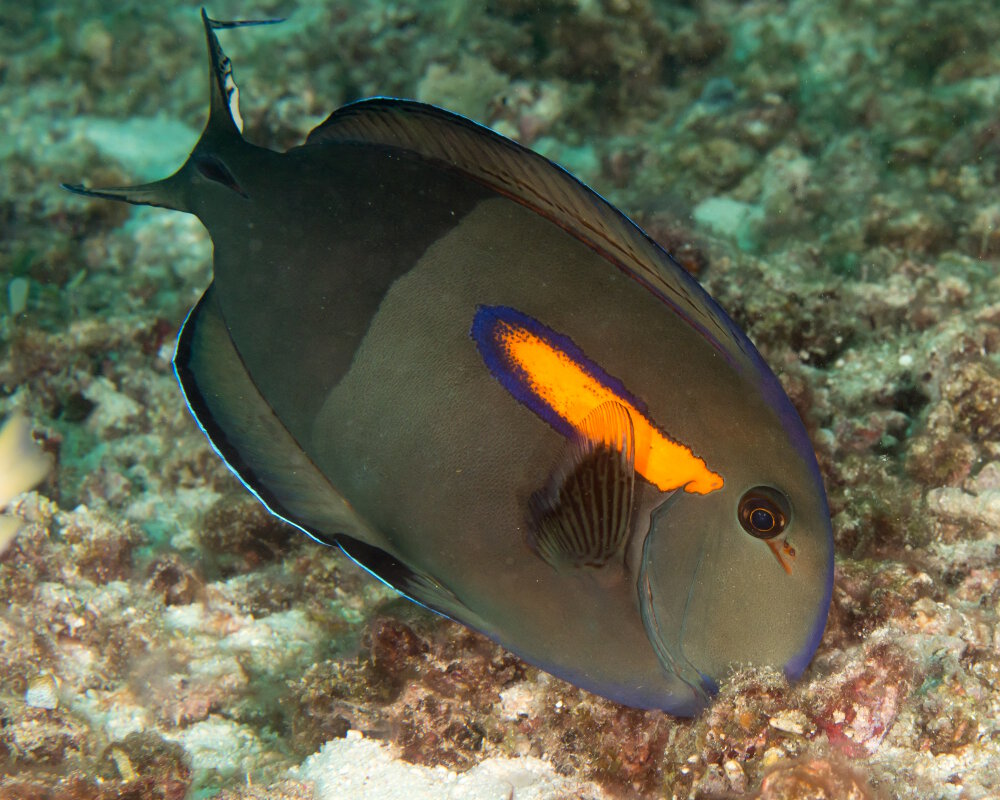
The orangeband surgeonfish (Acanthurus olivaceus) © Rickard Zerpe sous licence Creative Commons
A thin light-colored border outlines its long dorsal and anal fins.
The orangeband surgeonfish is a modest-sized fish, reaching about 8 inches in length when fully grown.
Geographic range
The orangeband surgeonfish is found in the tropical waters of the central Pacific ocean and also in the Indian ocean around the coral reefs of Mauritius.
Diet
Like most surgeonfish, the orangeband surgeonfish is primarily herbivorous. It feeds on algae and detritus scraped from the surfaces of coral reefs and rocky bottoms using its beak-shaped mouth.
Did you know ?
As an herbivore, the orangeband surgeonfish helps maintain healthy coral reefs by controlling algae growth.
The orangeband surgeonfish is listed as many other marine species within The IUCN Red List of threatened species. The orangeband surgeonfish appears in the IUCN Red List since 2012 within the category Least Concern !
Within the same genus
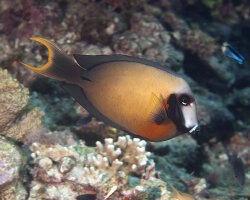
Black-spot surgeonfish
(Acanthurus bariene)
(Acanthurus bariene)
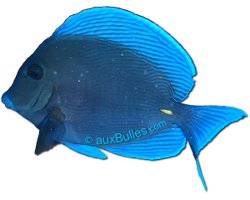
Blue tang surgeonfish
(Acanthurus coeruleus)
(Acanthurus coeruleus)
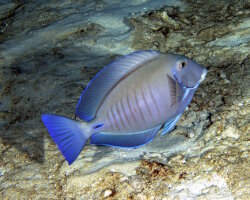
Doctorfish
(Acanthurus chirurgus)
(Acanthurus chirurgus)
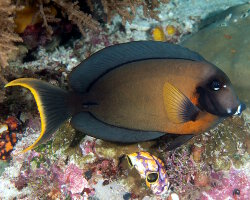
Mimic surgeonfish
(Acanthurus pyroferus)
(Acanthurus pyroferus)
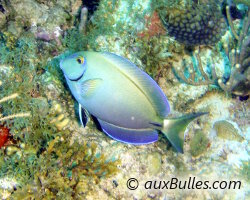
Ocean tang
(Acanthurus bahianus)
(Acanthurus bahianus)
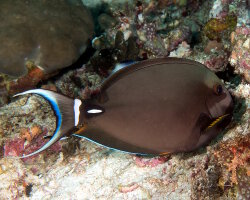
Palelipped surgeonfish
(Acanthurus leucocheilus)
(Acanthurus leucocheilus)
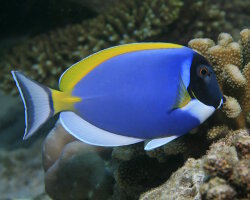
Powder blue tang
(Acanthurus leucosternon)
(Acanthurus leucosternon)
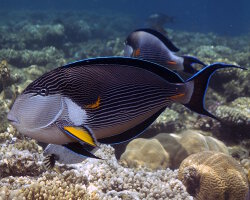
Sohal surgeonfish
(Acanthurus sohal)
(Acanthurus sohal)
Within the same family
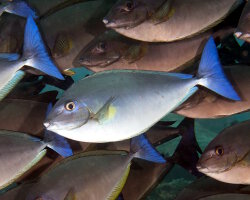
Bluetail unicornfish
(Naso caeruleacauda)
(Naso caeruleacauda)
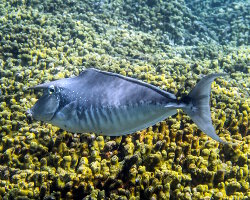
Humpback unicornfish
(Naso brachycentron)
(Naso brachycentron)
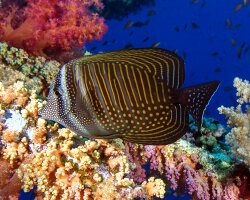
Indian sailfin surgeonfish
(Zebrasoma desjardinii)
(Zebrasoma desjardinii)
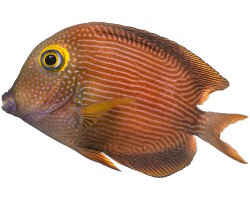
Kole tang
(Ctenochaetus strigosus)
(Ctenochaetus strigosus)
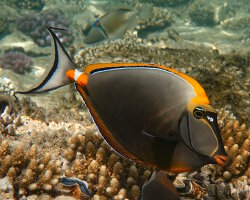
Orangespine unicornfish
(Naso lituratus)
(Naso lituratus)
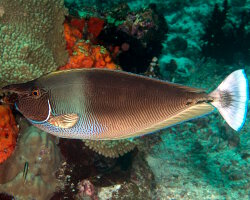
Paletail unicornfish
(Naso brevirostris)
(Naso brevirostris)
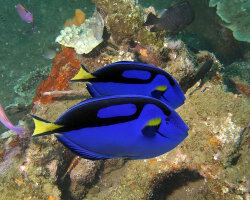
Palette surgeonfish
(Paracanthurus hepatus)
(Paracanthurus hepatus)
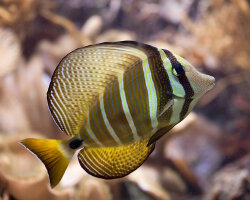
Sailfin tang
(Zebrasoma velifer)
(Zebrasoma velifer)
Discover also
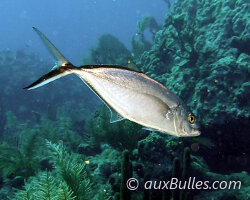
Bar jack
(Caranx ruber)
(Caranx ruber)

Blotched sandgoby
(Fusigobius inframaculatus)
(Fusigobius inframaculatus)
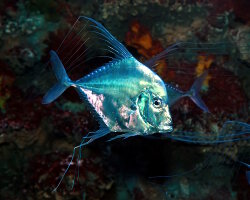
Indian threadfish
(Alectis indica)
(Alectis indica)
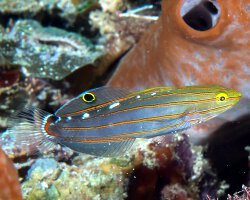
Old glory
(Koumansetta rainfordi)
(Koumansetta rainfordi)
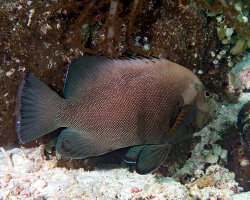
Redmouth grouper
(Aethaloperca rogaa)
(Aethaloperca rogaa)
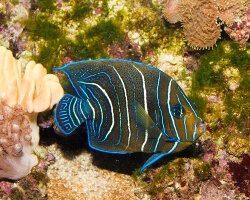
Semicircle angelfish
(Pomacanthus semicirculatus)
(Pomacanthus semicirculatus)

Snowflake moray
(Echidna nebulosa)
(Echidna nebulosa)

Turbot
(Balistes capriscus)
(Balistes capriscus)
Our latestUpdates

Thursday, January 9th 2025
The lemonpeel angelfish
The lemonpeel angelfish is a small, brightly colored reef fish found in the tropical waters of the Indo-Pacific ocean. It inhabits shallow coral reefs, sheltering among corals and rocky crevices.

Friday, December 19th 2025
The magic of Christmas decorations
Discover Christmas decorations in Florida: giant trees, illuminated palm trees, magical light displays and tropical settings to experience the holiday magic under the sun.
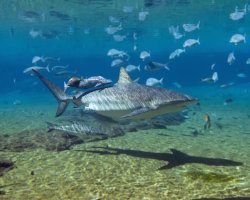
Monday, December 15th 2025
The dusky shark
Discover the dusky shark, one of the world's largest coastal sharks, and learn why this powerful predator is essential to marine ecosystems.
Photo of the Day

Girelle paon à taches d'encre
(Thalassoma hardwicke)
(Thalassoma hardwicke)
